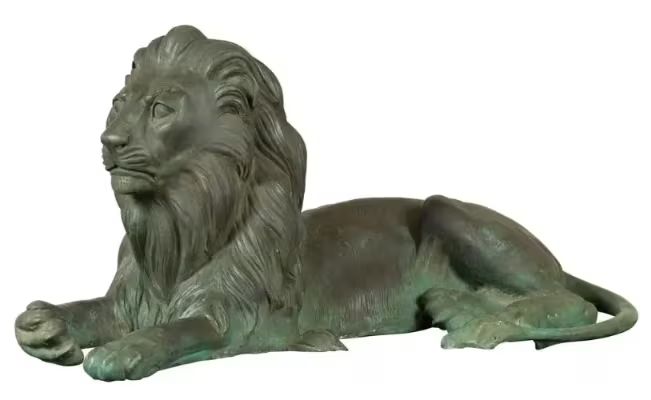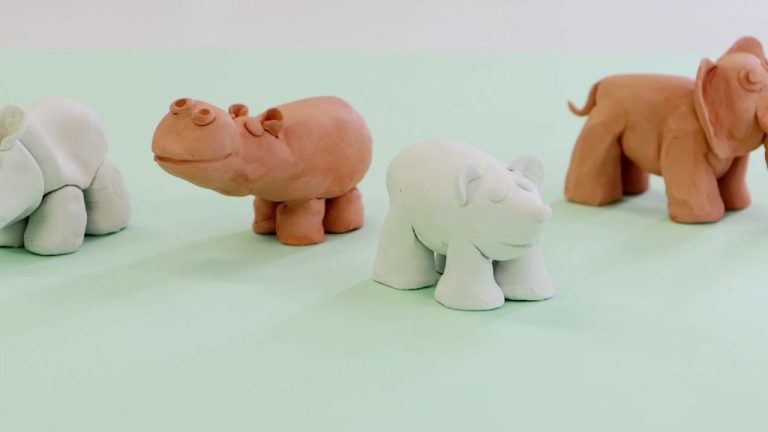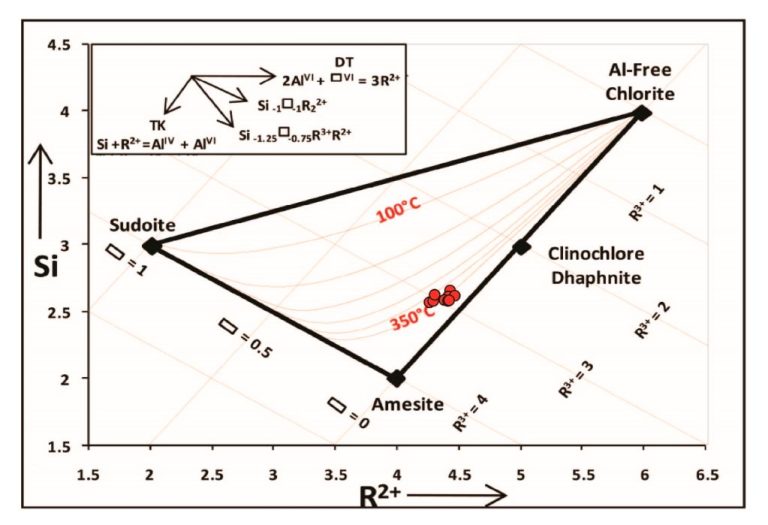What Color Is Patina Green?
What is Patina?
Patina is a thin layer that forms on the surface of metals like copper, brass, and bronze over time. According to Merriam-Webster, patina is defined as “a usually green film formed naturally on copper and bronze by long exposure or artificially (as by acids) and often valued aesthetically” (source). Dictionary.com similarly defines patina as “a film or incrustation, usually green, produced by oxidation on the surface of old bronze and often esteemed as being of ornamental value” (source).
Patina forms when the metal reacts with elements like oxygen, carbon dioxide, and chlorine in the atmosphere through a process called oxidation. This causes the metal to change chemically, resulting in a thin coating layer on the surface. Over many years, decades, or even centuries, this layer gradually builds up and develops the distinctive patina finish.
The patina layer acts as a protective barrier for the underlying metal. On copper and bronze, the patina is often green, referred to as verdigris, which comes from copper acetate forming on the surface. Other patina colors can range from brown and black to blue and grey. The patina gives the metal an aged, weathered look that is often prized for its antique aesthetic and rustic charm.
History of Patina
Patina has been used for decorative purposes since ancient times. The earliest known examples of patinated metal objects are about 5,000 years old and come from the Mediterranean, Egypt, and the Near East, including bronze ceremonial objects and jewelry (https://amcaw.org/learning-center/about-patina/). Patination was especially common during the Bronze Age and Iron Age.
Patina regained popularity during the Renaissance in the 15th and 16th centuries. Artists would deliberately patinate bronze sculptures and artworks to give them an antique green appearance. Verdigris, the common green patina that forms on copper and bronze, became a popular color in painting during this period. Renaissance artists like Michelangelo and Leonardo da Vinci used patinated bronze in many of their sculptures.
By the 18th century, patina on bronze became fashionable and appreciated as a sign of antiquity and artistic virtue. Architects and designers intentionally added patinated copper to buildings, furniture, and household objects. The patinated look remains popular today in historical restoration projects and with antique collectors.
Patina Green Color
The main color associated with patina is a greenish shade. The exact hex code for patina green is #B9EAB3 according to Pantone [1]. This hexadecimal color code translates to RGB values of red: 185, green: 234, blue: 179. Patina green has an official Pantone number of 12-0225 TCX. Other names used for this green color include Pistachio Green and Jade Green.
The association of patina finishes with aging and antiquity leads to the greenish-blue shades. As copper and bronze oxidize and age, they take on a greenish tint known as verdigris. Many patina metal finishes aim to recreate this aged, weathered look. The greenish patina shade evokes a sense of history, aging, and nostalgia.
[1] https://icolorpalette.com/color/pantone-12-0225-tcx
Use in Home Decor
Patina finishes are extremely popular for home decor, particularly with antique furniture and accessories. The worn, aged look of patina metal and wood can infuse a vintage aesthetic into any space. Patinas are created by artificially inducing oxidation and corrosion to produce unique effects on the surface of metals like copper, bronze and iron. According to Patina Home & Garden, patinas tap into the charm and character of aged materials.
Specific patina techniques used in home decor include:
- Verdigris – a blue-green patina produced on copper.
- Rust patinas – iron and steel oxidize to form orange and brown rust.
- Acid patinas – chemicals like liver of sulfur react with metals to create variegated colors.
- Paint patinas – multiple layers of paint create a crackled, aged effect.
Furniture and accessories like lamps, sconces, frames, vases, boxes, and candle holders often incorporate patina finishes. The palette of muted, organic patina colors blends effortlessly with rustic, vintage, industrial, boho, and farmhouse styles. Patina paint effects can also be created on walls, floors, and ceilings for an antiqued look. Overall, patinas add texture, depth, and timeworn appeal to any living space.
Use in Jewelry
Patina green is a popular color for jewelry, especially in copper and bronze pieces. The patina finish creates a vintage, aged look that is very desirable. Patina Jewelry specializes in artisan-made patina copper and bronze jewelry including rings, bracelets, necklaces and more. The greenish-blue patina color develops naturally over time as the copper/bronze oxidizes, but jewelers also use chemical solutions and heat to create patina finishes. The patina process brings out the undertones in copper and bronze, creating not just green but also blues, purples, and teals. Patina jewelry has an antique, Old World aesthetic that looks great with boho, vintage and steampunk inspired outfits.
Verdigris specifically refers to the natural blue-green patina that forms on aged copper and bronze. Jewelry artisans use real verdigris or chemicals to mimic the look. The vibrant green patina color on bronze and copper jewelry adds striking, unique beauty. Patina jewelry requires special care compared to shiny metals – avoiding water exposure helps preserve the patina layer. But the patina will continue to evolve over time, creating a living work of art.
Use in Art
Patina is commonly used in art, particularly in sculptures, paintings, and art restoration. The patinated surface creates visual interest and depth to artworks. Patina is especially popular in copper, bronze, and brass sculptures. As the metal oxidizes and corrodes over time, vibrant blue, green, and brown patinas develop on the surface. This gives the sculpture an aged, antique aesthetic. Many artists also deliberately patinate their metal artworks chemically to achieve diverse patina finishes like verdigris, liver of sulfur, torch fired, and more. Applying colored chemical patinas allows artists to create custom looks and textures.

For example, the Statue of Liberty gets its iconic green patina from the oxidation of the copper surface over decades of exposure to the elements. The French artist Frederic Auguste Bartholdi chose to use copper specifically for its patinating qualities and ability to symbolize change and the passage of time.
Painters sometimes depict patinated surfaces like weathered stone, aged wood, and oxidized metal in their paintings. The patina creates visual interest and textures. Some painters also age their canvas artificially to make it appear antique and seasoned.
Art restorers also work to preserve the original patinated surfaces of artworks and antiques during the restoration process. Cleaning the patina off entirely can damage and devalue the artwork. Restoring the patina finish brings an aged artwork back to its original glory.
Patina artworks can be found for sale on sites like Etsy where artisans produce original patinated sculptures, paintings, jewelry, and home decor items. The unique finishes and aged look of patina make it a popular technique in artistic mediums.
https://www.etsy.com/market/patina_art
Creating Patina Finishes
There are several techniques for intentionally creating patina finishes on metal, wood, and other materials. Two of the most common are chemically induced patinas and faux patina techniques.
Chemically induced patinas involve applying certain chemicals to the surface to oxidize and corrode the material in a controlled way. On copper and bronze, liver of sulfur is commonly used to create green and blue-green patinas. Ferric nitrate can create rainbow patinas, while cupric nitrate makes copper turn a verdigris green. Ammonia fumes will also corrode copper into a blue-green patina over time. These chemical patinas penetrate and alter the surface material for long-lasting results.
Faux patina techniques create the look of aged patina without altering the surface material. Paint mixes with organic ingredients like coffee, vinegar, or rust powder can be brushed on and left to weather naturally. Waxes like Verdigris wax tarnish copper green without corrosion. Painted finishes in patina colors provide a decorative patina look for a variety of surfaces. While faux patinas lack the depth and dimension of true chemical patination, they offer non-destructive ways to get the patinated style.
Caring for Patina
Properly caring for antique items with patina requires gentle cleaning methods to preserve the patina layer. Harsh chemicals can damage or strip patina, so mild cleaning solutions are recommended.
For cleaning, a mild soap and water solution can be effective. Southern Living recommends using a capful of Murphy’s Oil Soap mixed with 2 quarts of warm water and applying with a soft cloth [1]. Gentle dusting with a feather duster is also recommended for regular upkeep according to Stainless Inox [2].
Avoid using harsh chemicals, abrasives, or excessive scrubbing when cleaning antique patina, as this can damage the aged finish. It’s best to wipe gently and allow time for surfaces to air dry.
In addition to careful cleaning methods, patina sealants can be used to protect antique finishes. Applying a thin protective coating of wax, lacquer, or varnish can help prevent corrosion, tarnishing, and deterioration of old patinas over time.
Storing antiques properly is also key – keeping items out of direct sunlight and avoiding temperature/humidity fluctuations will help prevent cracking or peeling of patina layers. With proper care and maintenance, the natural patina on antique items can be preserved for many years.
Patina in Fashion
Patina leather is highly sought after in the fashion world. The aged, weathered look of patina lends a sense of history and character to leather goods like handbags, shoes, jackets and more. Many luxury designers incorporate patina finishes into their leather accessories and apparel.
Patina can occur naturally over time as the leather is exposed to the elements. However, fashion brands often artificially induce patina on leather through techniques like hand-rubbing, sanding and using chemicals. This allows them to achieve the distinctive patina aesthetic right away.
Some notable examples of patina fashion include brands like Miss Patina and high-end vintage dealers like Patina on 1stDibs. Miss Patina focuses on a romantic, vintage-inspired look incorporating patina materials. The Patina vintage dealer on 1stDibs offers a curated selection of antique clothing and accessories with patina.
Consumers are often drawn to the Old World charm of patina leather and fabrics. The patina look represents quality craftsmanship that improves with age. As a result, patina finishes have become a staple of luxury, vintage-inspired fashion.
Notable Patina Examples
Some of the world’s most famous statues feature notable patina finishes. The Statue of Liberty, for example, was designed with a patinated copper exterior that has turned a greenish-blue color over 130 years of exposure to the elements.
The Statue of Liberty was a gift from France to the United States, dedicated in 1886. Frédéric Auguste Bartholdi designed the massive sculpture, which stands over 150 feet tall, and used patinated copper for the exterior (1). The patina finish helps protect the copper from weathering and corrosion.
Michaelangelo’s famous sculpture David, completed in 1504, is another iconic statue with a patinated exterior. It was originally finished to look like bare marble. But over centuries of being displayed outdoors, David developed a patina coating in various hues of brown, black, and green (2).
Other renowned patinated bronze sculptures include Auguste Rodin’s The Thinker, the Christ the Redeemer statue overlooking Rio de Janeiro, and the U.S. Marine Corps War Memorial depicting soldiers raising the American flag at Iwo Jima.




